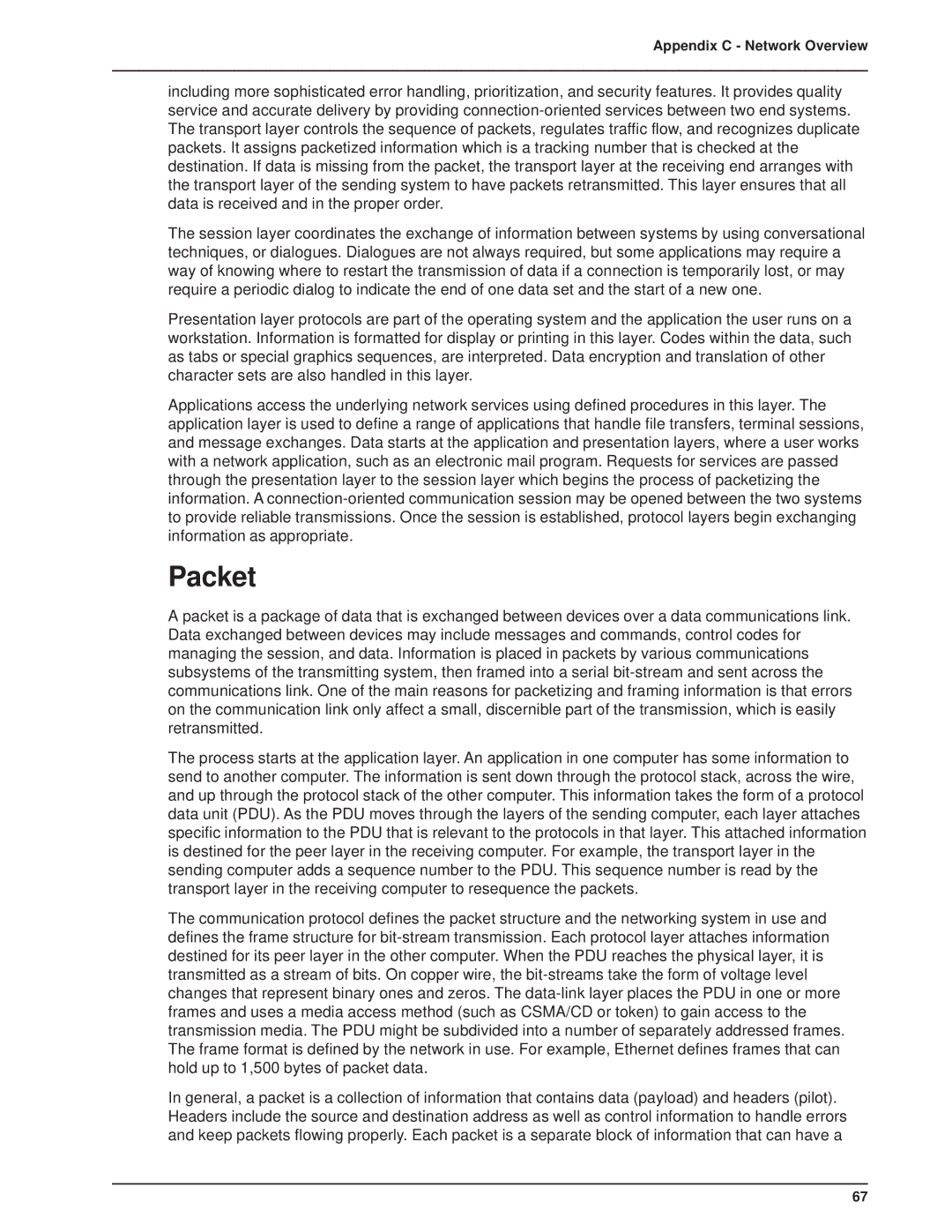
Appendix C - Network Overview
including more sophisticated error handling, prioritization, and security features. It provides quality service and accurate delivery by providing
The session layer coordinates the exchange of information between systems by using conversational techniques, or dialogues. Dialogues are not always required, but some applications may require a way of knowing where to restart the transmission of data if a connection is temporarily lost, or may require a periodic dialog to indicate the end of one data set and the start of a new one.
Presentation layer protocols are part of the operating system and the application the user runs on a workstation. Information is formatted for display or printing in this layer. Codes within the data, such as tabs or special graphics sequences, are interpreted. Data encryption and translation of other character sets are also handled in this layer.
Applications access the underlying network services using defined procedures in this layer. The application layer is used to define a range of applications that handle file transfers, terminal sessions, and message exchanges. Data starts at the application and presentation layers, where a user works with a network application, such as an electronic mail program. Requests for services are passed through the presentation layer to the session layer which begins the process of packetizing the information. A
Packet
A packet is a package of data that is exchanged between devices over a data communications link. Data exchanged between devices may include messages and commands, control codes for managing the session, and data. Information is placed in packets by various communications subsystems of the transmitting system, then framed into a serial
The process starts at the application layer. An application in one computer has some information to send to another computer. The information is sent down through the protocol stack, across the wire, and up through the protocol stack of the other computer. This information takes the form of a protocol data unit (PDU). As the PDU moves through the layers of the sending computer, each layer attaches specific information to the PDU that is relevant to the protocols in that layer. This attached information is destined for the peer layer in the receiving computer. For example, the transport layer in the sending computer adds a sequence number to the PDU. This sequence number is read by the transport layer in the receiving computer to resequence the packets.
The communication protocol defines the packet structure and the networking system in use and defines the frame structure for
In general, a packet is a collection of information that contains data (payload) and headers (pilot). Headers include the source and destination address as well as control information to handle errors and keep packets flowing properly. Each packet is a separate block of information that can have a
67
